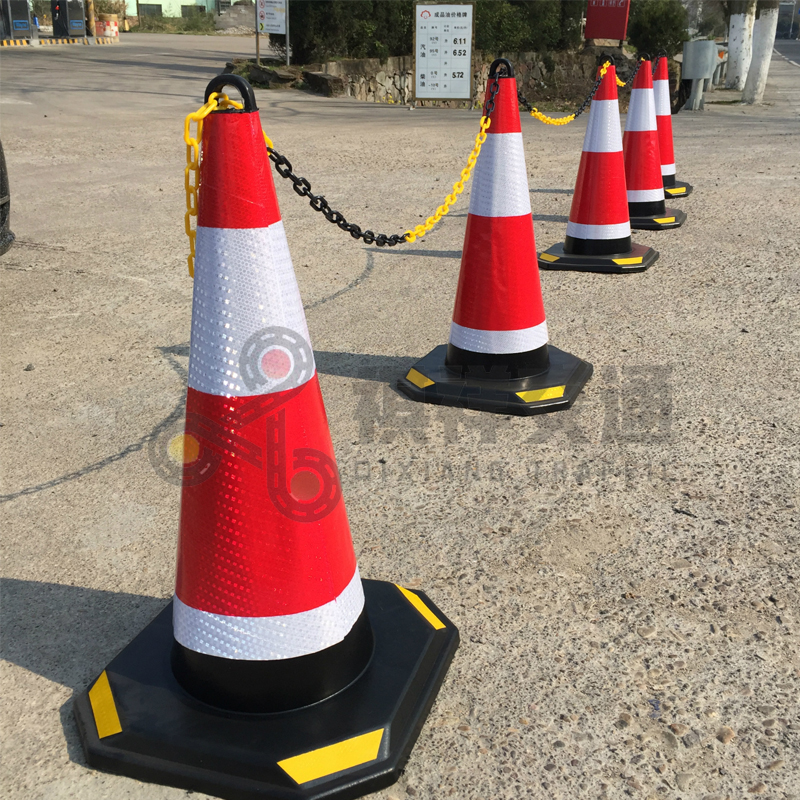Traffic cones are a common sight on roads and construction sites and are an important tool for directing and controlling traffic flow. These bright orange cones are designed to be highly visible and easily identifiable, keeping drivers and workers safe. Understanding traffic cone specifications and dimensions is critical to their effective use in a variety of environments.
Standard traffic cones are typically made from durable, weather-resistant materials such as PVC or rubber. These materials were chosen for their ability to withstand outdoor conditions and provide long-lasting performance. The most common color of traffic cones is fluorescent orange, making them highly visible day or night, making them ideal for ensuring road safety.
In terms of size, traffic cones come in a variety of sizes to suit different traffic management needs. The most common size range is from 12 inches to 36 inches in height. The 12-inch cone is typically used indoors and low-speed applications, while the larger 36-inch cone is suitable for high-speed roads and highways. The height of a cone plays a vital role in its visibility and effectiveness in controlling traffic.
Another important aspect of traffic cones is their weight. The weight of a traffic cone is a key factor in determining its stability and ability to resist being blown over by wind or passing vehicles. Standard traffic cones typically weigh between 2 and 7 pounds, with heavier traffic cones better suited for use in windy conditions or high-traffic areas.
The base of a traffic cone is designed to provide stability and prevent it from tipping over. The base is usually wider than the cone itself, creating a low center of gravity that enhances the cone’s stability. Some traffic cones have rubber bases that increase grip and traction on the road surface, reducing the risk of skidding or shifting.
Reflective collars are another important feature of traffic cones, especially for nighttime visibility. These collars are typically made of reflective material that enhances the cone’s visibility in low-light conditions. Reflective rings are strategically placed on the cones to maximize visibility from all angles, ensuring drivers can easily spot the cones and adjust their driving accordingly.
In terms of specifications, traffic cones are typically required to meet certain standards set by regulatory agencies. For example, in the United States, the Federal Highway Administration (FHWA) develops guidelines for the design and use of traffic control devices, including traffic cones. These guidelines outline specific requirements for the colour, size and reflective properties of traffic cones to ensure their effectiveness in traffic management.
In addition to standard traffic cones, there are also specialized cones designed for specific uses. For example, foldable traffic cones are designed for easy storage and transportation, making them ideal for emergency response teams and temporary road closures. These traffic cones can be quickly deployed and provide the same level of visibility and control as traditional traffic cones.
In summary, traffic cones are an important tool for managing traffic and ensuring road safety. Understanding traffic cone specifications and dimensions is critical to selecting the appropriate traffic cone for a specific application. From size and weight to reflective properties and base design, every aspect of a traffic cone contributes to its effectiveness in controlling traffic flow and enhancing road safety. Traffic cones play a vital role in maintaining order and safety on the roads by adhering to established standards and guidelines.
Welcome to contact traffic cone supplier Qixiang for a quotation.
Post time: Sep-06-2024







